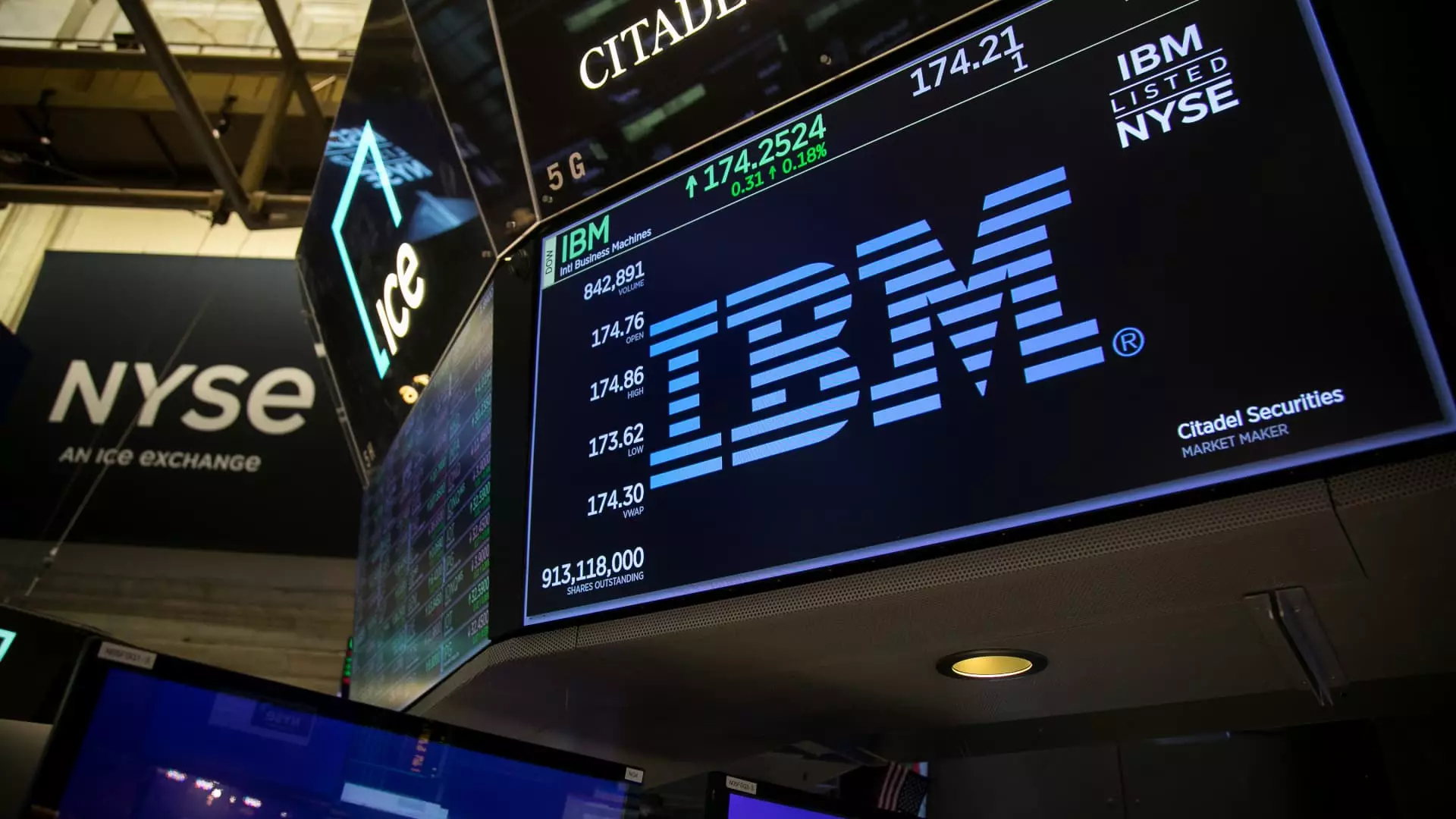The stock market is often characterized by its volatility and the rapid movements of individual stocks within major indices like the Dow Jones Industrial Average. Recently, several companies, particularly IBM, Uber, and Mattel, have caught the attention of investors, each exhibiting unique performances and challenges. This article seeks to explore these firms’ recent market behavior, dissect expert opinions, and analyze the underlying factors that might influence their future trajectories.
In recent weeks, IBM has emerged as a surprising powerhouse within the Dow Jones Industrial Average, garnering a substantial 27% increase. This growth, attributed in part to IBM’s recent financial results, demonstrates the company’s resilience in a competitive tech landscape. The firm reported fourth-quarter earnings that exceeded Wall Street expectations, bolstered by a 10% revenue increase in software sales, which reached $7.9 billion. This uptick was notably fueled by strong demand for AI technology and notable contributions from its Red Hat Linux division.
However, despite these positive indicators, market analyst Scott Nations remains cautiously optimistic. He emphasized on CNBC’s “Power Lunch” that IBM’s strategy in the artificial intelligence sector differs significantly from its competitors. Nations noted that while IBM’s methodology—termed the “DeepSeek approach”—holds promise, potential investors should exercise patience before committing fully, stating that there are “nagging worries” regarding the stock’s long-term viability. Additionally, the emergence of a competing AI model in China at dramatically lower development costs adds further pressure and uncertainty to IBM’s future in this burgeoning field.
IBM’s CEO, Arvind Krishna, offered a more optimistic picture, claiming the firm had secured $5 billion in bookings within its generative AI business. This affirmation underscores a growing reliance on AI as an essential tool for business transformation across sectors. Yet, amid mixed sentiments, it seems prudent for investors to wait for clear indicators of sustained growth before taking the plunge.
As one of the leading players in the ride-hailing space, Uber recently faced a turbulent phase after announcing disappointing quarterly earnings that prompted a sharp decline in its stock price. However, Nations views this dip as an opportunity, suggesting that investors take advantage of the current station. The company’s alignment with Alphabet’s Waymo division to introduce robotaxi services in Austin illustrates its commitment to innovation, highlighting the long-term possibilities in the autonomous vehicle market, which Uber estimates to be a trillion-dollar endeavor.
Nevertheless, CEO Dara Khosrowshahi’s candid acknowledgment that it will take “many, many years” to capitalize on this opportunity tempers enthusiasm about immediate gains. While the company is engaging in aggressive stock repurchases to bolster investor confidence, it will require time to see significant returns on its current investments in technology and infrastructure. Nations’ advice to buy the dip is rooted in the belief that Uber’s future offerings could reshape its business model, but this will only materialize through patience and strategic execution.
Mattel: A Toymaker’s Resurgence
In stark contrast to the mixed sentiments surrounding IBM and Uber, Mattel has basked in the glow of reputational revival, with shares soaring 14% following impressive fourth-quarter results. The toy giant announced profits exceeding analyst expectations, reflecting robust consumer demand amid a reinvigorated product lineup, particularly with products like Barbie capturing popular attention. This resurgence has invigorated investor confidence, with Nations indicating that he’d be interested in purchasing further shares if prices dip below $20.
Mattel’s continuing commitment to stock buybacks—forecasted at a staggering $600 million combined for 2023 and 2024—serves to enhance shareholder value and further cement investor interest. The correlation between a company’s financial strategies concerning buybacks and market performance cannot be overstated, as such moves often signal management’s confidence in future profitability.
While IBM navigates the complexities of AI to find its footing amidst rising competition, Uber’s endeavors in robotaxis signal a strategic pivot toward future innovations that may take time to realize. Meanwhile, Mattel shines brightly, buoyed by impressive financial performance and a strong buyback strategy. Investors keen on these companies should weigh both the immediate gains and larger market trends, allowing for informed decisions in a landscape characterized by uncertainty and opportunity. As always, the art of investing is a delicate balancing act, requiring patience, analysis, and an eye for the long game.

